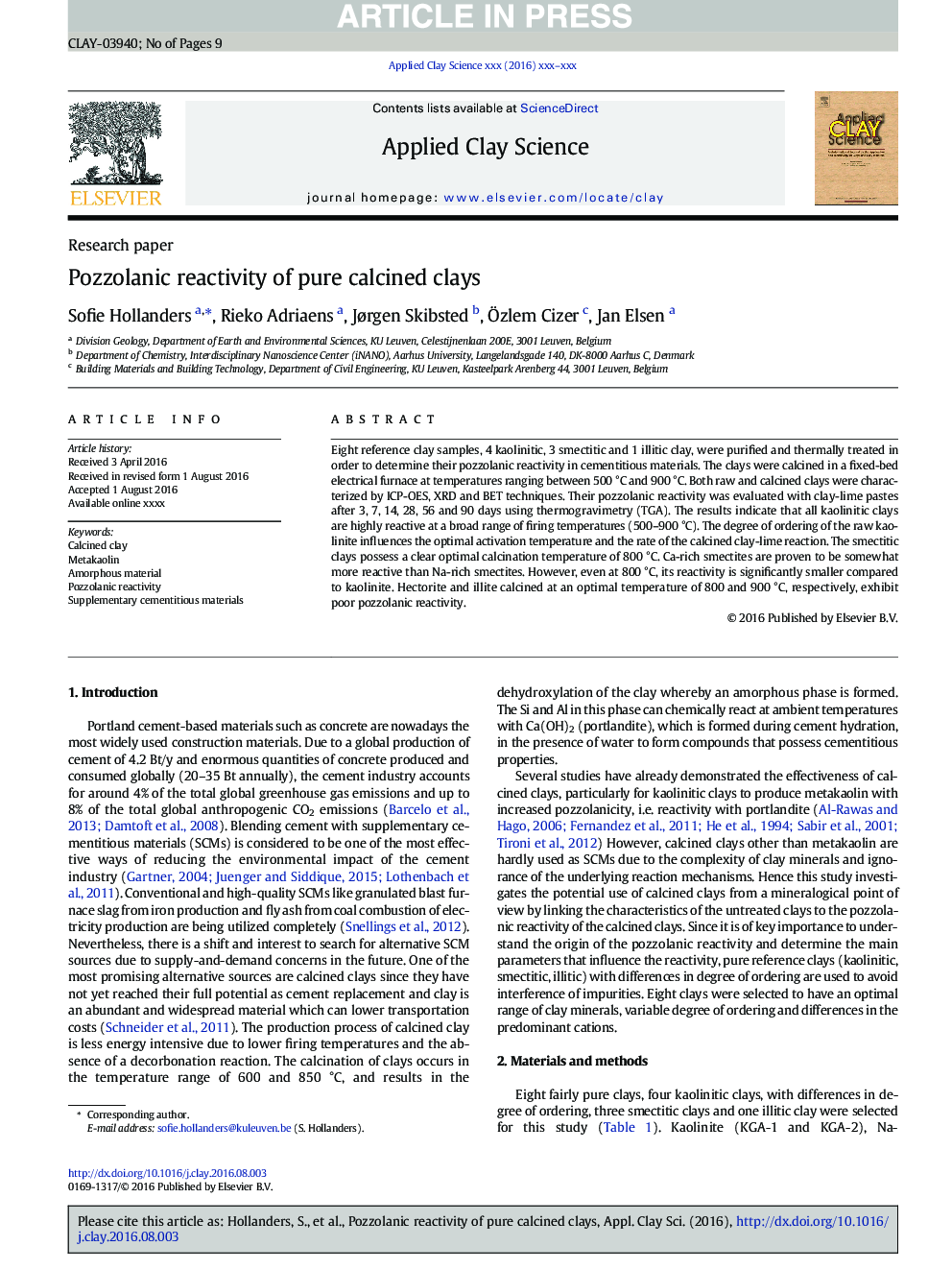| Article ID | Journal | Published Year | Pages | File Type |
|---|---|---|---|---|
| 5468789 | Applied Clay Science | 2016 | 9 Pages |
Abstract
Eight reference clay samples, 4 kaolinitic, 3 smectitic and 1 illitic clay, were purified and thermally treated in order to determine their pozzolanic reactivity in cementitious materials. The clays were calcined in a fixed-bed electrical furnace at temperatures ranging between 500 °C and 900 °C. Both raw and calcined clays were characterized by ICP-OES, XRD and BET techniques. Their pozzolanic reactivity was evaluated with clay-lime pastes after 3, 7, 14, 28, 56 and 90 days using thermogravimetry (TGA). The results indicate that all kaolinitic clays are highly reactive at a broad range of firing temperatures (500-900 °C). The degree of ordering of the raw kaolinite influences the optimal activation temperature and the rate of the calcined clay-lime reaction. The smectitic clays possess a clear optimal calcination temperature of 800 °C. Ca-rich smectites are proven to be somewhat more reactive than Na-rich smectites. However, even at 800 °C, its reactivity is significantly smaller compared to kaolinite. Hectorite and illite calcined at an optimal temperature of 800 and 900 °C, respectively, exhibit poor pozzolanic reactivity.
Keywords
Related Topics
Physical Sciences and Engineering
Earth and Planetary Sciences
Geochemistry and Petrology
Authors
Sofie Hollanders, Rieko Adriaens, Jørgen Skibsted, Ãzlem Cizer, Jan Elsen,
